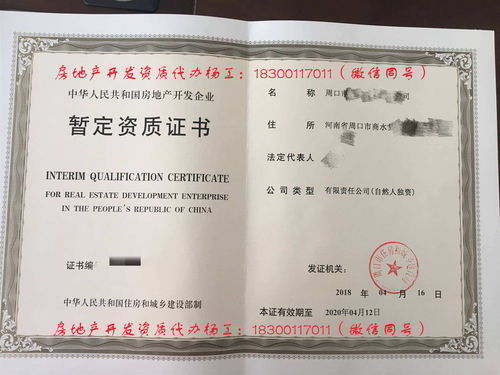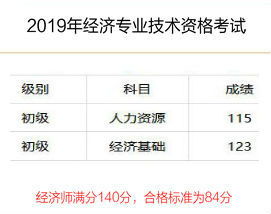教师资格证英语学科知识
教师资格证英语学科知识
对于考初中和高中教师资格证的同学,笔试要参加三科考试,其中科目三叫学科知识与教学能力。很多同学对于这个科目很迷茫,到底考什么呢?这次,我就详细说一说。
科目三英语学科知识与教学能力
专业基础知识另外一个集中考查点即单选题,其考查的单选题目,乍看知识点纷繁复杂,生僻不重样,让考生望而生畏,丝毫不知从哪着手准备。但静观近年真题,笔者发现其实它的变化多端中也有规律可循,实则百变不离其宗;就其大知识点范围来划分的话,可粗略分为以下几大类:
1.词义辨析和语法题。虽然词义辨析和语法题上在资格证考试中不是难点,但是它的重要性不可知否,它的题量一般在5-8题内波动,分值计10-16分。
词义辨析;词汇为专业四级-八级难度左右,如Being a direct relative of the deceased, her claim to the estate was ____C___.(2012初中)
A. optional B. compulsory C. legitimate D. prominent
The Euro has B , but the dollar is up. (2012高中)
A. deprecated B. depreciated C. depressed D. depraved
词义辨析直接考查考生的词汇积累;不难看出,相较初中学段而言,高中资格证考查的词汇更偏更难,对报考高中学段的考生提出的要求更高,如13年A. a chaperon B. a steward C. ruffian D. an atheist。对此,考生平时可通过阅读的方式间接积累词汇,也可直接背诵专四专八词汇书,掌握程度达到“再认”即可。
语法亦是资格证的必考点,其考查的语法知识点相对比较常规,现将往年出现的高频必考语法点罗列呈现如下:冠词;连词;动词的时态;非谓语动词;虚拟语气;三大从句(名词性从句、定语从句、状语从句);特殊句式(倒装句、强调句、省略句);如
__D__ conscious of her moral obligations as a citizen.(2015初中)
A. Marsha was and always will be
B. Marsha has to be and always will be
C. Marsha had been and will always be
D. Marsha has been and will always be
A who had arrested him three times for smuggling. (2012高中)
A. Before John stood the policeman
B. Before the policeman stood John
C. Before the policeman John stood
D. Before John the policeman stood
在备考语法的过程中,广大考生可针对高频语法考点,结合自己的薄弱项,多疏通,多理解,多做题(高考或者专业四级语法真题),查漏补缺即可。
2.情境交际用语。交际用语的考查关键在于理解上下文语境,同时要注意辨析选项的意思,平时多熟记交际用语,尤其是一些与汉语相差较大的表达;如
When checking students’ understanding of a certain language point in class, which of the following utterances is a teacher expected to make? (2013初中)
A. “Is it okay?” B. “Is it clear to you?”
C. “Are you clear?” D. “Is it all right to everyone
What would you say to the hotel receptionist to get a double room? (2015初中)
A. Rent us a double room
B. Book us a double room
C. We’d like to have a double room
D. Let’s have a double room
做好这类题目的关键是平时要养成讲英语的好习惯,多听多说,努力提高口语水平,熟练掌握日常会话中常用的问答语。
3. 英语语言学常识: 语言学常识是资格证考试的必考点,其题量为5-6题左右;涉及的的语言学分支范围较广,如语言学的基本概念(包括语言的本质特征及其功能)、语音学(phonetics)、音系学(phonology)、形态学(morphology)、句法学(syntax)、语义学(semantics)、语用学(pragmatics)及一些语言学跨学科分支如社会语言学(socio-linguistics)心理语言学 (psycho-linguistics)、应用语言学(applied linguistics);同时考查的知识点细小、具体,往往让对语言学知识知之甚少或者一知半解的考生感到措手不及。对此,笔者将近年来真题中出现的语言学知识必考知识点进行罗列介绍。
①语言的本质特征。它是指人类语言区别于其他动物交流方式的本质特征,包括任意性(arbitrary)、创造性(productive)、二重性(dual)、移位性(displacement)、文化传递性(cultural transmission);如下题
Juliet says in Shakespeare’s Romeo and Juliet: “What’s in a name? That which we call a rose by any other name would smell as sweet,” Her words pinpoint the fact that language is B .
A. recursive B. arbitrary C. culturally specific D. creative
该知识点难度较低,考查方式也较直接,考生只要理解其概念并加以识记其英文表达即可。
②语音学。语音学研究的对象是语言的声音媒介, 即人类语言中使用的全部语音。在资格证考试中是语言学的必考点,其考查的重点集中在辅音元音的分类及相应描述、音节划分、单词重音和句子重音、音调。如
Which of the following sets of English sounds differs only in one distinctive feature? ___A__(2012初中)
A. /f, θ, s,∫/ B. /t, θ, z,∫/
C. /f, θ, z, ʒ/ D. /t, d, z, ʒ/
Which of the following correctly describes the English phoneme/θ/?___A___
A.A voiceless dental fricative B A voiceless alveolar fricative
C. A voiceless dental plosive D.A voiceless alveolar plosive.
Which of the following correctly describes the word stress?___C____
A. Origin, Original, Originality B. oRIgin, oRIginal, oRIginality
C. Origin, oRIginal, origiNAlity D. oRIgin, oRIginal, OrigiNAlity
Decide on the correct stress pattern of the answer to the question.
——Where did he go next?
—— D .
A. He turned to the left at the end of the street.
B. He turned to the left at the end of the street.
C. He turned to the left at the end of the street.
D. He turned to the left at the end of the street.
综合近几年的真题笔者发现辅音以及重音是高频考点,在往后的考试中其重要性也不会削弱,因为作为未来的英语老师需要教授学生正确的英语发音和重音位置,用地道的英语口语进行表达。对此,特为大家梳理关于其相关知识点。
首先就辅音[S1] 分类:(1).辅音可根据气流产生声音时声带震动的情况,分为:清辅音(voiceless consonants: /p/ /t/ /k/ /f/ /θ/ /s/ /ʃ/ /h/ /tʃ/ /ts/ /tr/)和浊辅音(voiced consonants: /b/ /d/ /g/ /v/ /ð/ /z/ /ʒ/ /r/ /dʒ/ /dz/ /dr/ /j/ /w/ /m/ /n/ /ŋ/ /l/ ); (2). 根据发音部位的不同可分为唇音(bilabials:[p] [b] [m] [w]); 唇齿音 (labiodentals:[f]和[v]);齿间音(interdentals:[θ]和[ð]);齿龈音(alveolars:[t] [d] [s] [z] [l] [r] [n]);硬腭音 (palatals:[∫] [з] [t∫] [dз] [j]);软腭音(velars:[k] [ɡ] [ŋ])喉音(glottal:[h]);(3). 根据发音方式的不同,英语的辅音可以分为爆破(plosive consonants, stops),如[p] [b] [t] [d] [k] [ɡ], 摩擦(fricatives):[f] [v][ θ] [ð] [s] [z] [∫] [з] [h]; 破擦音(affricates):[t∫] [dз]; 流音(liquids):[l] [r]; 半元音,滑音(glides:[j] [w]);鼻音(nasals: [m] [n] [ŋ]);
其次就单词重音而言;
(1)单音节单词都需要重读,无需标注重音符号‘,如dog [dɔɡ] 、bang [bæŋ]等;
(2)双音节词一般在第一个音重读,如letter['letə]、origin['ɔrɪdʒɪn]; 动词靠第二如forget[fə'get];形、副、名后缀,地位比较低如helpful ['hɛlpfl],quickly ['kwɪkli], phyisician [fɪ'zɪʃən];既动又形名,规律照适应,如record做名词形容词时为[ ˈrɛkəd],作动词时为[rɪˈkɔrd];
(3)多音节单词一般倒数第三个音节为重音,如difficult['dɪfɪkəlt]; 有一些双音节词,加了前缀和后缀成了多音节,但这些词按原来词根的重音读音, es'tablishment [ɪ'stæblɪʃmənt];词尾有-eous, -grahpy, -ial, -ian, -ic, -ics, -ience, ient, -ify, -ion, -ious, -ity, -ive 后缀的词,重音在这些后缀的前一个音节上,如originality [ə,rɪdʒɪ'nælɪtɪ]; 另外词尾有-ee, -eer, -ese, -ette后缀的词,重音在该后缀上,而且有一个次重音,次重音一般在主重音前第二个音节上, 如Japanese [,dʒæpə'niz]等。
就句子中单词重音而言,遵循以下原则:实词重读(副词重读),虚词轻读(冠词,单音节介词,单音节连词,人称代词,反代词,物主代词,关系代词,相互代词,助动词,情态动词和系动词be;然后在下列情况下实词不重读,如
a) 实词第二次出现He thinks of that as a child thinks.
b) 一个名词被第二个名词修 I met her in the railway station.
c) 代替词Which book do you want? The small one.
d) 感叹词中的what和how What a good day it is! How beautiful she is!
e) this在这些短语中,this morning/afternoon/evening
虚词重读的特殊情况
a) 情态动词,助动词和系动词be在句首,句尾和否定时。
Do you like it? Yes, I do. Are you a doctor? Yes, I am.
b)情态动词表示可能,惊奇和肯定时。
They may come this evening. Can it be five already?
c) 介词在句首和句尾。In the box, he found a letter.
d) 引导复合句的连词在句首。 If you wish, I'll visit you.
When he comes, I'll tell him.
e) 反身代词表示强调。He couldn't come himself.
综上可知,语音学是资格证语言学的必考点,其考点细、具体、灵活,需要考生完全理解其知识点,能够灵活应用理论知识解决具体问题,做到融会贯通;
③音系学。音系学研究的是某一特定语言的语音体系,即音在特定的语言中是如何结合产生有意义的单位来进行交际。音系学相关知识也是语言学常识的一个高频考点,往年出现真题如下:
Which of the following consonant clusters may NOT serve as the beginning of
a word?___D____
A. /spr/ B. /skw/ C. /str/ D. /swt/
The phrase “in bed” is pronounced as __B__ in real speech.
A. /in’bed/ B. /im’bed/ C. /’inbəd/ D./’imbəd/
The phoneme /n/ in the first word of all the following phrases changes to /m/ EXCEPT .
A. open book B. open marker C. brown paper D. brown hat
相较语音学,音系学知识点的识记繁琐程度要低,考生们只要能记住其相关基本概念即可,具体罗列如下:
音位对立(Phonemic contrast):如果两个音位(phonemes)可以出现在相同的语音环境中,且具有区别语义的功能,那么它们就形成了音位对立(different or distinctive phonemes are in phonemic contrast), 如tip和dip中的/t/和/d/。
互补分布(complementrary distribution):体现的是同一音位不同音位变体(allophones)从不出现在相同的位置上,且没有区别意义的功能(allophones of the same phoneme are in complementary distribution. They don’t distinguish meaning. They occur in different phonetic contexts)。如top中送气的[th]和stop中不送气的[t]的关系是互补关系。[th]不能出现在[s]后,而[t] 也不能出现在词首。
最小对立体(minimal pairs):指的是在同一位置上只有一词之差的一对词(When two different forms are identical in every way except for one sound segement which occurs in the same place, the two sound combinations are said to form a minimal pair)。如tip/dip,pig/dig;pen/和ben.
音位规则:
1. 序列规则(sequential rule)
英语中的三辅音连缀需遵守以下序列规则:第一个音位必须是/s/,第二个音位必须是: /p/ 或 /t/或 /k/,第三个音位必须是:/l/ 或 /r/ 或 /w/,如splendid, stragight;
2. 同化规则(Assimilation rule)
英语语音中的同化规则如下,①由浊辅音转为清辅音(voiced-voiceless);②由齿龈音[n]的发音常受到后面辅音的影响,[n]后辅音如果是双唇音时要同化为[m],如ten minutes[tem’minits], [t]-[p],如right place [raip place],[d]-[b],如good-bye[gub bai];③[s]+[j] this year, [z]+[j]-如where’s yours,/t/+/j/-/tʃ/如last year; /d/+/j/-如/dʒ/.
3.Deletion rule(省略规则)
如当一个单词以鼻音结尾,而在这个鼻音前存在一个[g],那么这个[g]不发音,如sign, design, paradigm等
4. 4.形态学:形态学研究词汇的内部结构以及构词法则,其考查的知识点较常规,难度相对低,考生只要掌握形态学包含的基本概念即可,如词素(morpheme),自由词素(free morpheme)、黏着词素(bound morpheme)、曲折词素(inflectional morpheme),英语构词法。要求考生能在理解概念的基础上能灵活根据给定单词识别其相应词素量或识别其构词方式,如The word “chronology” contains morphemes.(2012初中英语)
A. four B. three C. two D. five
5. 语义学:语义学研究词与词、句子与句子之间的关系;语义学也是考查重点,如2012年真题The lexical relation between damp and moist is ___A____. (2012初中)
A. synonymy B. antonymy C. hyponymy D. homonymy
2015年真题Which of the following is an entailment of the utterance “Annie broke the window”? ____C___
A. Annie was careless. B. Annie was disruptive
C. Annie did something to the window. D. It was Annie who broke the window.
现将语义关系系统梳理,就词与词之间的关系而言,存在如下关系:
①同义关系(synonymy);其又可细分为方言同义(dialectal synonyms)如lift & elevator;
文体同义(stylistic synonyms )如dad&father; 表情意义或评价意义相异的同义词,如 collaborator & accomplice;搭配同义词(collocational synonyms )accuse &charge;
语义相异的同义词(Semantically different synonyms) rage暗含“情感的失控” indignation暗含“由于道义上的原因引起的愤怒;
② 反义关系( antonymy ); 其又可细分为等级反义(Gradable antonyms),如young&old;互补反义(complementary antonyms), 如alive & dead;互逆反义(Relational opposites) husband&wife, buy&sell;
③ 一词多义(Polysemy) ,如apply“申请; 应用”
④ 同音(形)异义(Homonymy), 其又可分为同音异义(Homophones),如night/knight rain/reign; 同形易义(Homographs),如tear(n.)/ tear(v) , record(n.)/record(v);
⑤上下义关系Hyponymy, 上义词(superodinate)指概念上外延更广的词,如花(flower)是玫瑰(rose)的上义词,植物又是花的上义词;下义词(hyponymy)指概念上内涵更窄的词,如玫瑰(rose)、郁金香(tulip)、菊花(chrysanthemum)便是花(flower)的下义词。
就句子与句子而言,存在以下关系:
①X与Y同义(X is synonymous with Y)
如The boy killed the dog.= The dog was killed by the boy.
②X与Y不一致(X is inconsistent with Y)
如John is married.& John is a bachelor.(3)X entails Y.
③X蕴含entail Y(Y是X的一个含义(entailment))
He bought some roses.& He bought some flowers.
④ X预设Y(Y是X的先决条件)X presupposes Y./Y is a prerequisite of X
如He bought some roses. & He had some money.
⑤自我矛盾(X is a contradiction)
My unmarried sister is married to a man.
⑥语义反常(X is semantically anomalous)
The table has bad intentions.
综上所述,词义关系容易理解,考生只要识别词义,识记相应关系的英文表达即可;句意关系中的考查重点亦是难点的为蕴含关系和预设关系,由于其容易混淆,考生可选择记住一个典型例子即可,如“他买了玫瑰花”蕴含了“他买了花”;“他买了玫瑰花”的前提是“他有钱”,在考试时进行灵活套用,保证万无一失。
6. 语用学:语用学研究语言使用者如何使用句子进行成功交际的,其涉及的高频考点有
Austin的speech act theory,考生需要理解并区分言内行为(locutionary act)、言外行为(illocutionary act)、言后行为(perlocutionary act);同时Grice的会话合作原则也是重点,会话合作原则(Cooperative principle)在进行会话时,参与者起码得愿意合作,否则交谈就无法进行,其包括以下四个原则:数量准则(The maximum of quantity)、质量准则(The maximum of quality)、关联准则(The maximum of relation)、方式准则(The maximum of manner),说话者若违背某一准则便会产生“会话含义”,即言外之意, 考生需要掌握各会话原则概念,并能够准确地从给定语句中识别说话者违背了哪项原则,并能理解其言外之意即可。如2015年的真题The following conversation clearly violates the ___B_
A: How did you finally go to school today?
B: The bus arrived so fast that I got to school very early.
A. Maxim of Quantity B. Maxim of Relation
C. Maxim of Quality D .Maxim of Manner
语言学知识是资格证笔试考查的重点。同时也是难点。对语言学常识掌握地比较薄弱的考生可以系统地将语言学常识熟悉梳理,在备考时要注意对语言学中的基本概念的积累,可参考戴炜栋《新编简明英语语言学教程》。由于英语资格证真题原题复现频率几乎为零,加之知识点泛、杂,所以透彻理解知识点,多练理论用于实践才是王道;因此考生更要提早备考,在理解领会和日常积累的基础之上,学会融会贯通,一题会题题会。
注:以上内容来源于网络,侵删。





















